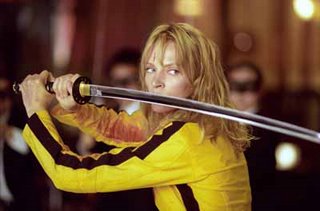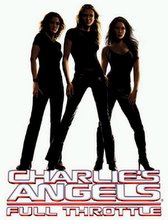1. Gauntlett, David (2002): Media, Gender and identity. West 35th Street, NY: Routledge.
This book is useful to me because it mentions my film Charlies angles with a case study that will be usefull to me. It also talks about the ideal women and focuses on women throughout the whole book which is realted to my topic and can use some things he wrote when i talk about pleasure.
2. Tasker, Yvonne (2004): Action and adventure cinema. Madison Avenue, NY: Routledge.
As my film is an action film it will be relevent to me as it includes some topic i need to cover and mentiones most of my texts that i am covering and so this book will help me will my research.
3. Lacey, Nick (2000): Narrative and Genre key concepts in media studies. Hampshire, UK: Macmillan.
This book mentions the films that i will be looking at such as Aliens as this is the first film to feature a female protagonist that will be relevent to my study.
4. Blandford, Steve, Grant, Barry Keith, Hillier, Jim (2001):The film studies dictionary. Madison Avenue, NY: Arnold.
This book contains some words that i will be able to use for my independent study.
5. Sarder, Ziauddin and Loon, Borin Van (2000): Introducing media studies. St. Leonards, NSW: Icon books UK.
This book contains information on some of the theories and theorists that i will be useing for my independent study so it will be relevent to me.
6. Sullivan, Tim O', Dutton, Brian, Rayner, Philip (2003): Studying the media, An introduction third edition. Madison Avenue, NY: Euston Road, London: Arnold.
This book contains information on representation and mentions some on the film that i will be covering in my independet study. It also mentions some theories and theorists i will be using so this will beneft me when i need research.
7. Philip, Rayner, Wall, Peter and Kruger, Stephen (2004): Media studies:the essential resource. New fetter Lane, London:Routledge.
This book mentions information on representation and has information on my chosen text and other texts i will be looking at. It also mentions the theorists and theories that i will be using.
8. Cook, Pam and Bernink, Mieke (1999): The cinema book 2nd edition. Stephen St, London: British film institute.
This book contains a lot of information that i will be able to gather together and pick out relvent things that will be useful to me when writing my independent study.
9. Bennett, Jacquie (2005): Media studies AS & A2. Gosport, Hants: Longman.
This book contains alot of information such as women and film and theorits and their theories that i found usefull.
10. Lacey, Nick (1998): Image and Representation key concepts in media studies. Hampshire, UK: Palgrave.
This book focuses on representation and will be able to use this book when i talk about represnetation of women especially in films.
11. Branston, Gill and Strafford, Ray (2003): The media students book-third edition. Madison Ave, NY,USA: Routledge.
This book has information on my chosen texts and other texts i will be using to help me. It also mentions further information on theorists i will be using and theories and this will help me widen my resaerch.
12. Kaplan, E. Ann (1998): Women in film noir. London: british film institute (BFI).
13. Langford, Barry (2005): Film genre- Hollywood and beyond. Edinburgh: Edinburgh university press.
This book foucuses on hollywood films and my film, Charlies angels is a hollywood film. The book has a section i found useful which was on womens film. it talks about women films and the elements used with examples which i foud useful.
14. Nelmes, Jill (1996): An introduction to film studies- third edition. London: Routledge.
This book was useful to me because it contains a lot of information on women and stereotypes on women and their role. This will be useful as my text,Charlies angels challenges the stereotypical roles of women.
15. Gilligan, Sarah (2003): Teaching women and film. London, UK: British film institute (BFI).
This book is entirely focused on women and a section helped that talked about my text and the pleasures the film gives the audience so this will help me as it is realted to my independent study question.
Books i need to look at:
16. Cook, Pam and Dodd, Philip (1993): Women and film: "sight and sound" reader.
This book is on women and may include useful information i will be able to use for my independent study.
17. Pitkin, Hanna Fenichel (1967): The concept of representation. publisher: University of Calafornia.
This book focuses on representation as my topic is on representation on women, it may include relevent information on representation on women or similar.
18. Delamont, Sara (2001): changing women, unchanged men?. Buckingham, UK: Open university press.
This book is based on how women have changed from the past to contemporary society and how men have stayed the same. This may be useful to be as i will be talking about roles of women and how they are changing.


